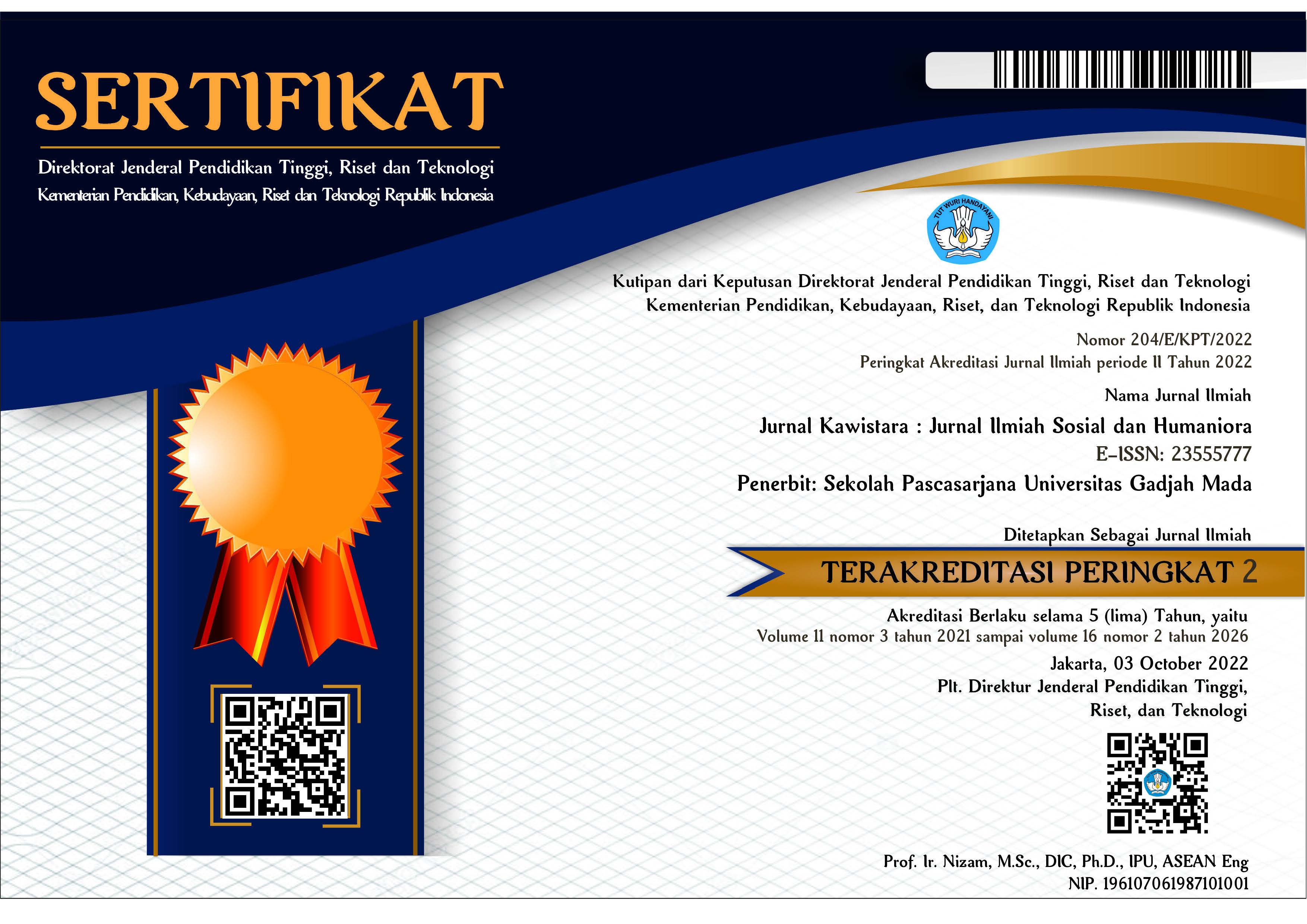River Mitigation as a Form of Elderly-Nature Interaction in Densely Populated Settlement in Yogyakarta
Muhammad Aldi Rahmatul Hakim(1*), Diananta Pramitasari(2)
(1) Universitas Gadjah Mada
(2) Universitas Gadjah Mada
(*) Corresponding Author
Abstract
High population density has been associated with disease susceptibility. To address this problem many suggest that the negative effects of population density can be reduced by interacting with nature as a restorative activity. This study aims to determine how the elderly in the residential areas on the banks of the Winongo river, Ngampilan District, Yogyakarta City with high population density interact with nature in the riverside environment, and what form of space is needed. This study uses a deductive exploratory method with elderly respondents who are active on the riverbank. The results showed that the riverside space which is used as a space for interaction between the elderly and nature is a room with sitting facilities, walls that are not closed, and shade that is not too tight. Interactions with nature that occur can be in the form of physical restoration, recreation, domestic, and mitigation activities. The activity of seeing water levels as flood mitigation is the most dominant form. Physical limitations make elderly people more aware of disasters along the riverbanks. A space that makes it easier for the elderly to do disaster anticipation activities needs to be prepared for long-term planning.
Keywords
Full Text:
PDFReferences
Ching, Francis D. K. (2000). Arsitektur, Bentuk, Ruang dan Susunannya. ed.ke-2. Terj. Nurrahman Tresani Harwadi. Jakarta: Erlangga.
Clayton, S., Colléony, A., Conversy, P., Maclouf, E., Martin, L., Torres, A. C., et al. (2017). Transformation of experience: toward a new relationship with nature. Conserv. Lett. 10, 645–651.
Dempsey, Seraphim & Devine, Mel & Gillespie, Tom & Lyons, Sean & Nolan, Anne. (2018). Coastal blue space and depression in older adults. Health & place. 54. 110-117.
Finlay, Jessica & Franke, Thea & McKay, Heather & Sims-Gould, Joanie. (2015). Therapeutic landscapes and wellbeing in later life: Impacts of blue and green spaces for older adults. Health & place. 34. 97-106.
Gong F., Xu J., Takeuchi D. T. (2012). Beyond conventional socioeconomic status: examining subjective and objective social status with self-reported health among Asian immigrants. J. Behav. Med. 35 407–419.
Hartig, T., Kaiser, F. G., and Bowler, P. A. (2001). Psychological restoration in nature as a positive motivation for ecological behavior. Environ. Behav. 33, 590–607.
Hartig, T., Mitchell, R., de Vries, S., and Frumkin, H. (2014). Nature and health. Annu. Rev. Public Health 35, 207–228.
Keniger L. E., Gaston K. J., Irvine K. N., Fuller R. A. (2013). What are the benefits of interacting with nature? Int. J. Environ. Res. Public Health 10, 03-09
Laurens, J. M. (2005). Arsitektur dan Perilaku Manusia. Jakarta : Grasindo.
Lawton, M. P. (1986). Environment and Aging. Philadelphia: The Center for the Study of Aging.
Lee AC, Maheswaran R. (2011). The health benefits of urban green spaces: a review of the evidence. Journal of Public Health 33, 212-222.
Mayer, F. S., and Frantz, C. M. (2004). The connectedness to nature scale: a measure of individuals’ feeling in community with nature. J. Environ. Psychol. 24, 503–515.
Rosa C. D., Profice C. C., Collado S. (2018). Nature experiences and adults’ self-reported pro-environmental behaviors: the role of connectedness to nature and childhood nature experiences. Front. Psychol. 9:1055.
Setiawan, B dan Haryadi. (2010). Arsitektur Lingkungan dan Perilaku. Yogyakarta: Gadjah Mada University Press.
Sommer R.(1969). Personal Space: The Behavioral Basic Design. Englewood Cliffs, New Jersey: Prantice-Hall, Inc.
Statistik, B. P. (2014). Kecamatan Ngampilan Tahun 2014. Yogyakarta: Badan Pusat Statistik Kota Yogyakarta.
Statistik, B. P. (2014). Kota Yogyakarta Dalam Angka 2014. Yogyakarta: BPS Provinsi D.I. Yogyakarta.
Sugiyono. (2013). Metode Penelitian Kuantitatif Kualitatif dan R&D. Bandung: Alfabeta.
Van Dillen, S. M. E.; De Vries, S.; Groenewegen, P. P.; et al; Spreeuwenberg, P. (2012). Greenspace in urban neighborhoods and residents' health: Adding quality to quantity. Journal of Epidemiology and Community Health, 66-6.
Weisman, G. (1981). Modeling Environment Behavior System. Journal of Man-Environment Relations.
White, Mathew & Smith, Amanda & Humphryes, Kelly & Pahl, Sabine & Cracknell, Deborah & Depledge, Michael. (2010). Blue Space: The importance of water for preferences, affect, and restorativeness ratings of natural and built scenes. Journal of Environmental Psychology. 30. 482-493.
Zeisel, J. (1981). Inquiry By Design: Tools For Environment-Behavior Research. New York: Cambridge University Press.
Article Metrics
Refbacks
Copyright (c) 2021 Muhammad Aldi Rahmatul Hakim, Diananta Pramitasari

This work is licensed under a Creative Commons Attribution-ShareAlike 4.0 International License.
Jurnal Kawistara is published by the Graduate School, Universitas Gadjah Mada.







